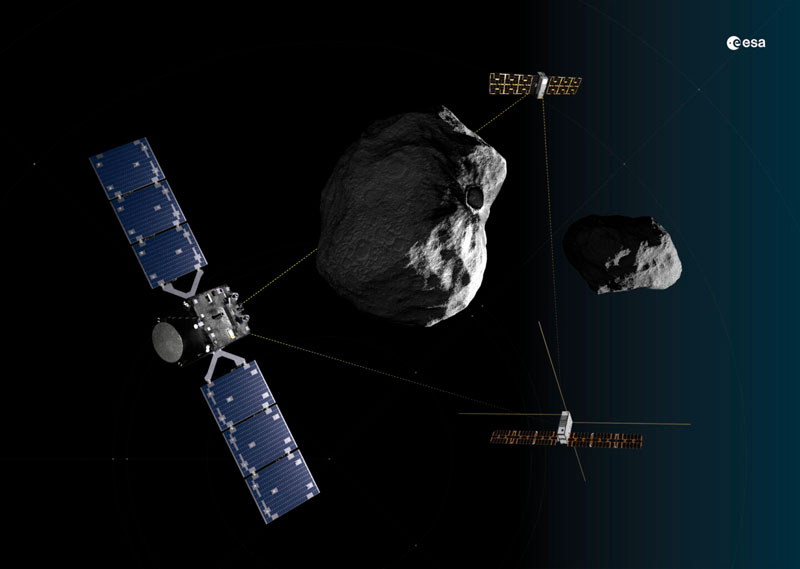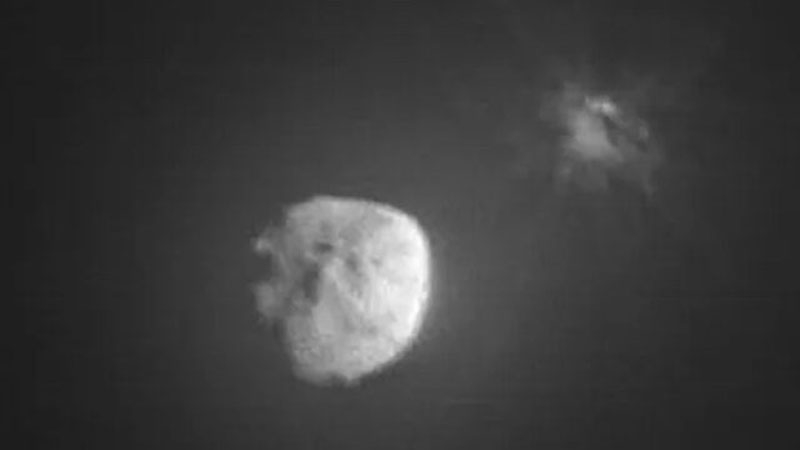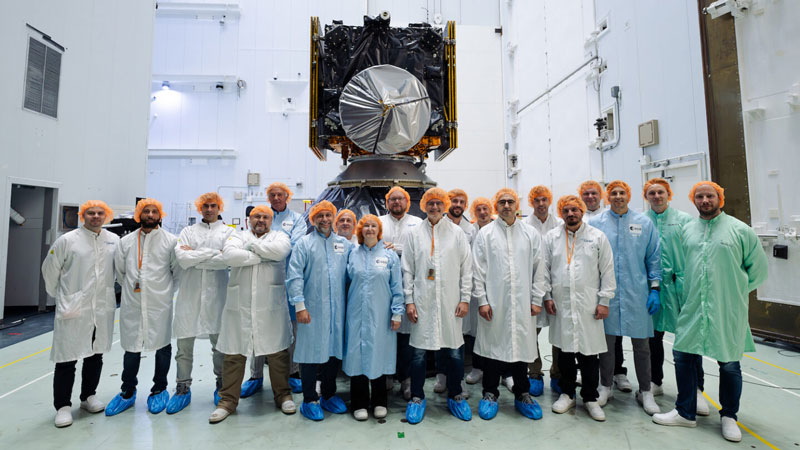Yesterday at 17:52 Moscow time, the SpaceX Falcon 9 rocket launched from the Space Force station at Cape Canaveral, Florida, sending the European interplanetary station Hera (“Hera”) onto its departure trajectory. The device will visit the binary asteroid system Didyma and Dimorpha to assess the impact of the DART kamakaze probe, which will help in the future to deflect dangerous asteroids from Earth.

Hera station and two reconnaissance cubesats. Image source: ESA
The DART mission ended in October 2022, when the 750-kg probe crashed into the Dimorph asteroid, measuring about 160 m. Dimorph orbits the noticeably larger, 780-meter asteroid Didymus. The impact altered the Dimorph’s orbit, shortening the duration of one rotation by approximately 32 minutes to 11 hours 23 minutes. If this turned out to be possible to do with an experimental asteroid, then it can happen in the event of a mortal threat to the Earth from another asteroid. However, scientists do not have enough data to make accurate calculations. ESA’s Hera probe aims to fill this gap.
It was originally planned that Hera would fly with DART and film the impact process. The EU authorities delayed the adoption of the budget for the mission, and it will now take place years after the clash. However, this does not negate its exceptional value. At the moment, scientists do not have data on the exact structure and even topography of both asteroids. All they have are murky images from the Italian cubesat, which was dropped from the DART probe minutes before it died, as well as observations from telescopes.

Dimorph after being hit by a DART probe (image from an Italian cubesat)
It is believed that the DART probe created an impact crater on the surface of Dimorph and dislodged a pile of boulders, dust and other debris from it. Observations with the Hubble Telescope helped identify at least 37 large boulders in the plume. According to some signs, Dimorph was not a monolithic heat and was a mountain of stones stuck together under the influence of gravity. It is not difficult to imagine that a strike on such a cluster would lead to different results than a strike on a monolith.
On board the Hera probe and two reconnaissance cubesats, Milani and Juventas, which it will drop as it approaches Dimorph, there are a total of 12 scientific instruments. The station is equipped with three cameras, a thermal imager, lidar and instruments for measuring gravity in the asteroid system. Cubestats also have cameras, radars and sensors. At least one of them will try to land on an asteroid. The task of all this equipment is to obtain the most complete and accurate data about asteroids, their structure, composition and orbits. Only accurate information will help build the most advanced model for calculating the deflection of dangerous asteroids from the Earth using the kinetic impact method.
The SpaceX Falcon 9 rocket gave 100% during the launch of the Hera station. She accelerated it to a record speed of 43,042 km/h – this is the highest speed for this rocket in its history. For this reason, the first stage and upper stage did not return to Earth. This also served as FAA permission for SpaceX to launch. The upper stage, which had problems during the launch of a manned mission to the ISS about a week ago, in the case of “Hera” did not return to Earth to be sunk in the ocean, but was carried away from the planet. All other Falcon 9 launches are currently suspended while the anomaly is investigated.

SpaceX and ESA team in the rocket payload installation shop
In March 2025, the Hera probe will fly by Mars for a gravity assist maneuver and take close-up images of one of its moons, Deimos. The station will reach the target asteroid system in October 2026. This will be the start of Hera’s six-month mission to study Dimorphus and Didymus. The closest approach between the station and Didim should be approximately 1 km. Scientists are somewhat concerned about asteroid debris that could have lingered in the system after being struck by the DART probe. But previous probe missions to the comet and other asteroids suggest that no serious threat is expected.
The launch of the mission, by the way, was, as they say, on the edge. Hurricane Milton gained strength in the area of the spaceport. The rocket took off at the very last moment before. But the launch of the Europa Clipper station into space on October 10 was canceled due to the hurricane.